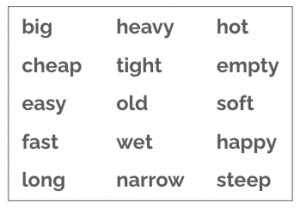In our series of stories about ABA techniques that increase student response time and engagement, we’re sharing three effective teaching methods that increase student participation. To engage more students, we need to implement teaching techniques that encourage active student responses. In choral responding, students respond orally in unison to each question, problem, or item the instructor presents.
Choral responding can be used for:
- Math: number identification, basic facts
- Reading: letter, word identification
- Social Studies: geographic identification, vocabulary
How to teach using choral responding
Choral responding works particularly well when the responses are short, one-word responses with key similarities. Remember to allow students time to think. You can signal for thinking time by putting one hand up or making a specific sign for your students. When you’re ready for students to respond, provide a signal, like lowering your hands, or a tap on an item, that cues them to respond in unison.
In the skeleton example below, students could first learn the names of bones with the names showing, then practice with them removed. You can state the question or prompt, pause for thinking time, and signal students to respond by tapping or touching the bone.

For example, the teacher could say, “This is the skull. What is it?”
Students would respond in unison: “Skull.”
The teacher could continue by saying, “The human brain is inside the skull. What is this?”
Students would respond in unison: “Skull.”
Language Arts often has word lists, and choral responding offers a flexible way to practice vocabulary as a class.

You could teach students the words on the list and then begin choral responding.
The teacher could say, “This word is ‘cat.’”
“What is this word?”
The teacher taps the word, cueing students to respond.
The students respond, in unison, “cat.”
The teacher could ask students to read the words horizontally or vertically, say the opposite of each word listed, name the words in alphabetical order, or name words that rhyme.
The teacher could ask, “What word rhymes with hat?”
The teacher could tap the word “cat,” and the students could say it in unison.
The teacher could say, “This word is ‘big.’”
Then the teacher could ask, “What is this word’s opposite?”
The teacher taps the word, cueing students to respond.
The students respond, in unison, “Small”.
Tips for using choral responding in a lesson:
- Provide a lively pace.
- Provide confirmation and praise when the whole group answers correctly.
- Alternate between individual and smaller group responses. This allows individual kids to be successful in front of the whole group because they just heard the answer.
- Model new material and responses before asking students to respond.
Choral responding: low effort, high impact

Of the three techniques we’re talking about in this series, choral responding is the easiest to implement, with the highest impact, across all types of curriculum. Choral responding can be used in multiple settings and formats, for a range of learners. Research shows that choral responding is an effective way to teach and maintain new skills. We hope you’ll try it in your classrooms and let us know how it goes.
If you are looking for more quick tips on how to use ABA strategies at home visit our Youtube channel.
You can also find more articles on a variety of ABA strategies here.




